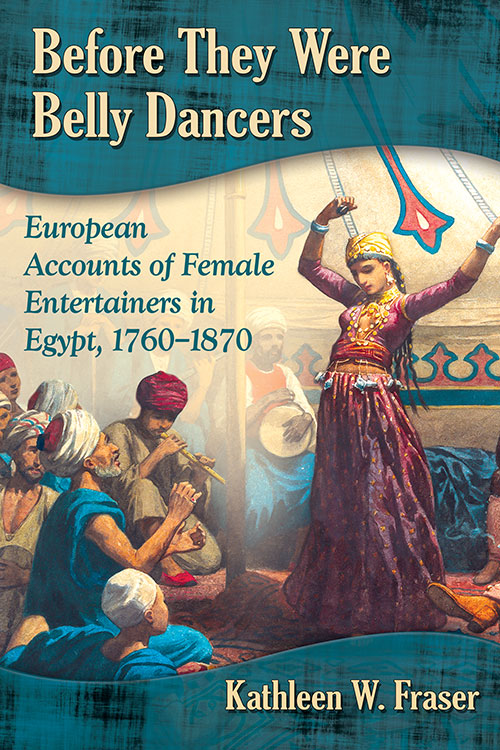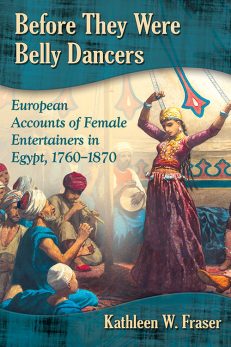Before They Were Belly Dancers
European Accounts of Female Entertainers in Egypt, 1760–1870
$29.95
In stock
About the Book
Focusing on Egypt during the period 1760 to 1870, this book fills in some of the historical blanks for a dance form often known today in the Middle East as raqs sharki or raqs baladi, and in Western countries as “belly dance.” Eyewitness accounts written by European travelers, the major primary source for modern scholars, provide most of the research material. The author shapes these numerous accounts into a coherent whole, providing a picture of Egyptian female entertainers of the period as professionals in the arts, rather than as a group of unnamed “ethnic” dancers and singers. Analysis is given of the contexts of this dance—that was a legitimate performing art form in Egyptian society appreciated by a wide variety of audiences—with a focus on actual performances—and a re-creation of choreography.
About the Author(s)
Bibliographic Details
Kathleen W. Fraser
Format: softcover (6 x 9)
Pages: 308
Bibliographic Info: 27 photos, appendices, notes, bibliography, index
Copyright Date: 2015
pISBN: 978-0-7864-9433-0
eISBN: 978-1-4766-1916-3
Imprint: McFarland
Table of Contents
List of Illustrations xi
Preface 1
Section One: Background
1. On Writing This Book 9
2. Selected Egyptian History—the Study Period 15
3. Writers and Painters in Egypt from 1760 to 1870 18
Section Two: Setting the Stage
4. A Name for the Dance and a Name for the Dancer 33
5. The Low Reputation of Female Entertainers 43
6. The Geography of Going to the Show 48
Section Three: Going to the Show—Professionals at Work
7. The Corporation of Female Singers—the Chanteuses 59
8. Identifying the Raqqâsin, Corporation 200 64
9. Identifying the Ghawâzî, Corporation 192 72
10. Male Performers—Dancers and Musicians 81
Section Four: The Lives of Female Entertainers
11. Relationships with Various Groups in Egyptian Society 89
12. Professional Relationships with the Audience 99
13. Training 105
14. Economic Position of Female Entertainers 108
Section Five: Biographies
15. Thirty-One Female Dancers and One Male 125
Section Six: Gossip, Hearsay, Rumors and Myths
16. The Missing ‘Awâlim 147
17. The Massacre of “The Four Hundred” 151
18. Banning the Dance in Muhammad Ali’s Egypt 158
19. Myths of Origins of Female Dancers and Singers 167
Section Seven: Building the Aesthetic of Performance
20. A Costume Benchmark Set by Edward Lane 177
21. The Musicianship of Dancers 200
22. The Aesthetic of Dance Movements 205
Section Eight: Choreography and Performance
23. Six Choreographic Elements Basic to the Dance 215
24. Extending the Definition of Choreography 219
25. Three Identifiable Dances 223
26. Accessory Dances 236
Epilogue 241
Appendix One: Biographical Facts About Selected 18th–and Early 19th-Century Travel Writers and Artists 253
Appendix Two: Travelers’ Terms for Female Entertainers: Selected Passages by Date of Travel 260
Chapter Notes 265
Bibliography 281
Index 291





